Do you struggle with performing a proper push-up? Are your feet unable to stay in place or do you experience minimal engagement of your core muscles while trying your best? Don’t worry, it’s a common problem among beginners. The issue may stem from improper form or weak core muscles. However, fear not, there is a solution! One of the most effective ways to improve your push-up form and build a stronger core is by incorporating feet elevated push-ups into your fitness routine. In this blog post, I will guide you through the steps to perform a successful feet elevated push-up and the benefits it provides for your overall fitness.
Feet Elevated Push Up Summary
- Primary Muscles: Pectoralis Major – Sternal
- Secondary Muscles: Deltoid – Anterior, Pectoralis Major – Clavicular, and Triceps Brachii
- Equipment: Flat Bench
- Mechanics Type: Compound
- Force: Push
- Utility: Basic or Auxiliary
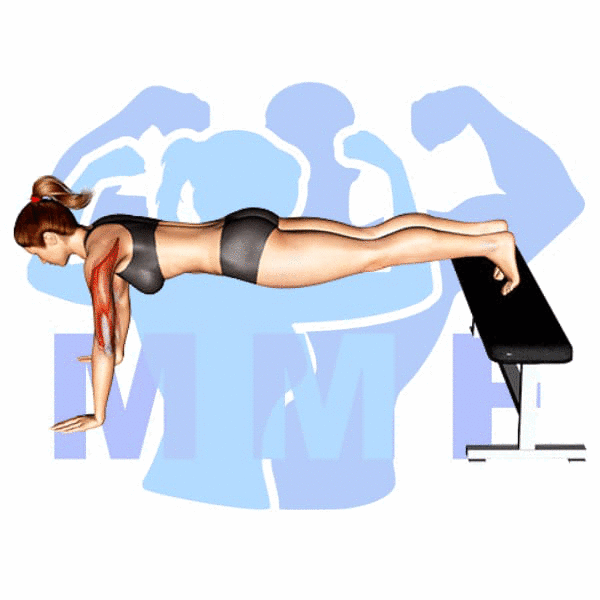
Feet Elevated Push Up Instructions
- Lie prone on the floor with your hands slightly wider than shoulder width.
- Elevate your feet onto a bench or chair.
- Press your body off the floor, extending your arms with your body straight.
- Then, lower your upper body to the floor by bending your arms.
- Continue by pushing your body up until your arms are extended, completing a full set.
Video Tutorial
Feet Elevated Push Up Muscles
Target (Agonist)
- Pectoralis Major – Sternal
Synergists
- Deltoid – Anterior
- Pectoralis Major – Clavicular
- Triceps Brachii
Dynamic Stabilizers
- Biceps Brachii – Short Head
Stabilizers
Antagonist Stabilizers

Benefits of Feet Elevated Push Up
The Feet Elevated Push Up is an excellent exercise for strengthening the pectoralis major – sternal muscle. This exercise can help to increase chest strength and stability, as well as improve posture and balance. It is also beneficial for athletes looking to develop more power in their chest for activities such as bench pressing, swimming, and even running. The feet elevated push up is also a great way to engage your core muscles and increase your overall stability. Not only will you be strengthening your chest muscles, but you will also be toning your abdominal muscles and improving your balance.
Tips for Performing Feet Elevated Push Up
You’ve come to the right place if you’re motivated to advance your feet elevated push up execution. These tips will help you get the most out of this amazing workout, and help you receive all the benefits it has to offer. You will tone your chest muscles, and even reduce your chances of developing an injury. It is time to get started and take a look at how these suggestions will help you.
- Make sure to warm up before attempting Feet Elevated Push Ups. This will help reduce the risk of injury and allow you to perform the exercise with the correct form.
- Place your feet on a stable surface that is slightly higher than your hand placement. This will increase the intensity of the exercise, making it more effective for building upper body strength.
- Ensure that your core is engaged throughout the entire exercise. This will help prevent lower back pain, as well as make sure that you are targeting the right muscles.
Benefits and Tips Video
Frequent Mistakes To Avoid
When performing feet elevated push up, avoiding typical errors can be the difference to achieving optimal results and preventing pain. Additionally, achieving the most out of the exercise requires proper form, and avoiding make any common errors can help you to perform the exercise better and obtain your desired results. However, take it easy, it’s not quite as difficult as it might appear. By knowing the errors to avoid and taking the right actions, you can execute the exercise securely and effectively. So let’s get started on avoiding those common mistakes and making this exercise a normal part of your fitness routine.
- Not positioning the feet correctly: Many people make the mistake of not ensuring their feet are properly elevated during a Feet Elevated Push Up. This can cause the exercise to be ineffective, as the angle of the push up is incorrect and you won’t get the full benefit from the exercise.
- Not engaging the core: Another common mistake is not engaging your core during a Feet Elevated Push Up. Your core muscles are essential for stabilizing your body and keeping you balanced, so if you don’t engage them during this exercise, you won’t get the best results.
- Not keeping your back straight: Finally, some people make the mistake of allowing their back to arch while they are doing Feet Elevated Push Ups. This can cause strain on your back and shoulders, so it’s important to keep your back straight throughout the exercise for optimal form and safety.
Find More Bodyweight Exercises Here
Variations and Complementary Exercises
There are plenty of alternatives to Feet Elevated Push Ups that work similar muscles. If you are looking for a variation on the traditional push up, or a complementary exercise to add to your workout routine, take a look at the following exercises:
Close Grip Push Up On Knees

The Close Grip Push Up On Knees is a great alternative or complementary exercise to the Feet Elevated Push Up. This exercise works the same muscle groups as the Feet Elevated Push Up but places less stress on the wrists and shoulders, making it an ideal choice for those who have difficulty with the Feet Elevated Push Up. To perform this exercise, start in a kneeling position with your hands close together and your toes on the floor. Bend your elbows and lower your chest towards the floor, then press back up to the starting position. Keep your elbows close to your body throughout the movement and focus on engaging your core throughout the entire exercise.
Close Grip Push Up

Close Grip Push Up is a great complementary or alternative exercise to Feet Elevated Push Up. It works the same muscles in the chest and arms, but places a greater emphasis on the triceps. To perform a Close Grip Push Up, the hands should be placed closer together than in a standard push up. This exercise can be made easier or harder by adjusting the incline of the body. For example, raising the feet on an elevated surface such as a bench or step increases the difficulty level. This makes it an ideal exercise for all fitness levels as it can easily be modified.
Lever Pec Deck Fly (Machine)
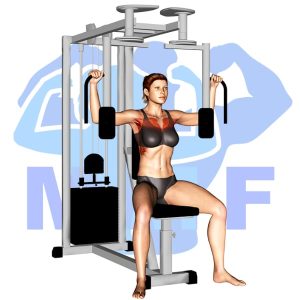
The Lever Pec Deck Fly is a great machine that can be used as a complementary or alternative exercise to the Feet Elevated Push Up. It helps to target the chest muscles, while also helping to increase the range of motion of the shoulder joints. The Lever Pec Deck Fly is performed by sitting on the machine and pushing the levers forward, while keeping the elbows bent at 90 degrees. It also allows for a greater range of motion than traditional push ups, which can help to increase the intensity of the workout. Furthermore, it is an effective way to increase muscular endurance, as well as helping to improve posture and balance.
Check Out These Top Bodyweight Exercises
Standing Cable Chest Press

The standing cable chest press is a great complement to the feet elevated push up. It works the chest in a similar way, but with the added stability of the cable machine. It also allows for more range of motion than the push up, allowing for more complete chest activation. The cable chest press is an excellent alternative to the feet elevated push up, providing an extra challenge and helping to build strength and muscle.
Push Ups
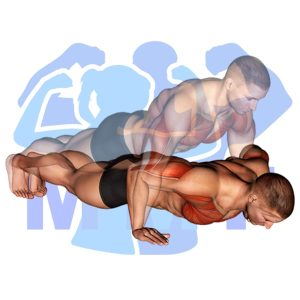
Push Ups are a great exercise that can be used as a complement to Feet Elevated Push Ups or as an alternative exercise. Push Ups target the chest, triceps, and shoulders, and involve pushing your body away from the floor. To perform a Push Up correctly, you need to keep your core tight and your body in a straight line from your shoulders to your ankles. Push Ups can be modified by changing the hand placement, adding weights, or increasing the number of repetitions. Feet Elevated Push Ups are a more advanced version of Push Ups, as they require more stability and strength. They involve elevating your feet on a bench or other elevated surface while you lower yourself to the floor. Both Push Ups and Feet Elevated Push Ups will help you build strength and stability while also targeting specific muscle groups.
Push Up From Knees
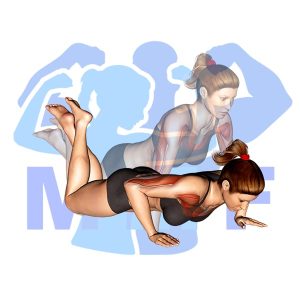
Push Up From Knees is an excellent exercise for those looking to build strength in their chest, shoulders, and arms. It is a great complementary or alternative exercise to the Feet Elevated Push Up, as it allows you to focus on building the same muscles with a slightly different motion. With Push Up From Knees, you start in the kneeling position and then press up from your knees rather than from your feet. This variation of the exercise can help build strength in areas that may be weaker than others, and it also helps to reduce strain on the wrists and elbows. It is a great exercise for those just starting out with Push Ups, as it allows you to progress at a more manageable pace.
Find More Chest Exercises Here
Opposing Complementary Exercises
In addition to Feet Elevated Push Ups, there are other exercises that can be included in a workout to complement the exercise and further strengthen the muscle groups used. To make sure your workout is balanced and effective, it is important to include exercises that work the opposing muscle groups. Here are some examples of exercises that target opposing muscles:
Resistance Band Bent Over Rear Lateral Raises

Resistance Band Bent Over Rear Lateral Raises are a great way to complement Feet Elevated Push Ups. This exercise works the opposite muscle group, targeting your posterior deltoids, rhomboids, and rear delts while Feet Elevated Push Ups work your anterior deltoids, chest, and triceps. Resistance Band Bent Over Rear Lateral Raises also help to build strength and stability in the shoulder area, which is essential for proper shoulder mechanics when performing Feet Elevated Push Ups. Both exercises work to strengthen your upper body and are complementary to each other.
Resistance Band Straight Back Seated Rows

The Resistance Band Straight Back Seated Rows is a great exercise to complement the Feet Elevated Push Up as it works the opposing muscle group. It is an exercise that strengthens the back muscles while also working the arms, shoulders, and core. It is done by sitting on the floor with a resistance band secured around the feet. You then pull the ends of the band towards you, engaging your back muscles and slowly release. This exercise helps to strengthen your upper body while also improving your posture. By doing both exercises together, you can improve your overall strength and core stability while also targeting different muscle groups.
Resistance Band Standing Rows
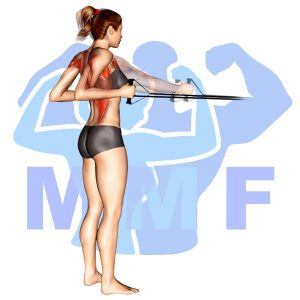
Resistance Band Standing Rows are a great complementary exercise to Feet Elevated Push Ups as they work the opposing muscle group. This exercise strengthens the back muscles, primarily focusing on the rhomboids and trapezius muscles, by having you pull the band towards your body. You will be standing upright with your feet hip width apart, holding the band at arm’s length in front of your body with palms facing down. Maintaining a slight bend in your elbows, pull the band back towards your chest and pause for a moment before slowly returning to the starting position. Resistance Band Standing Rows help to balance out the strength gained from Feet Elevated Push Ups, providing a comprehensive total body workout.
Elevate Your Push-Up Game With Feet Elevated Push-Ups
Are you tired of the same old push-up routine? Try elevating your feet with a sturdy bench or step. This simple modification can give your push-up game a serious boost. By increasing the height of your feet, you will be engaging your upper chest, shoulders, and triceps to a greater extent. The challenge of this exercise may seem daunting at first, but with practice, you’ll quickly notice improvements in your strength and overall fitness. Give it a try and see how it elevates your workout routine.
References: Wikipedia | ExRx.net | PubMed.gov | Comprehensive List of Chest Bodyweight Exercises

